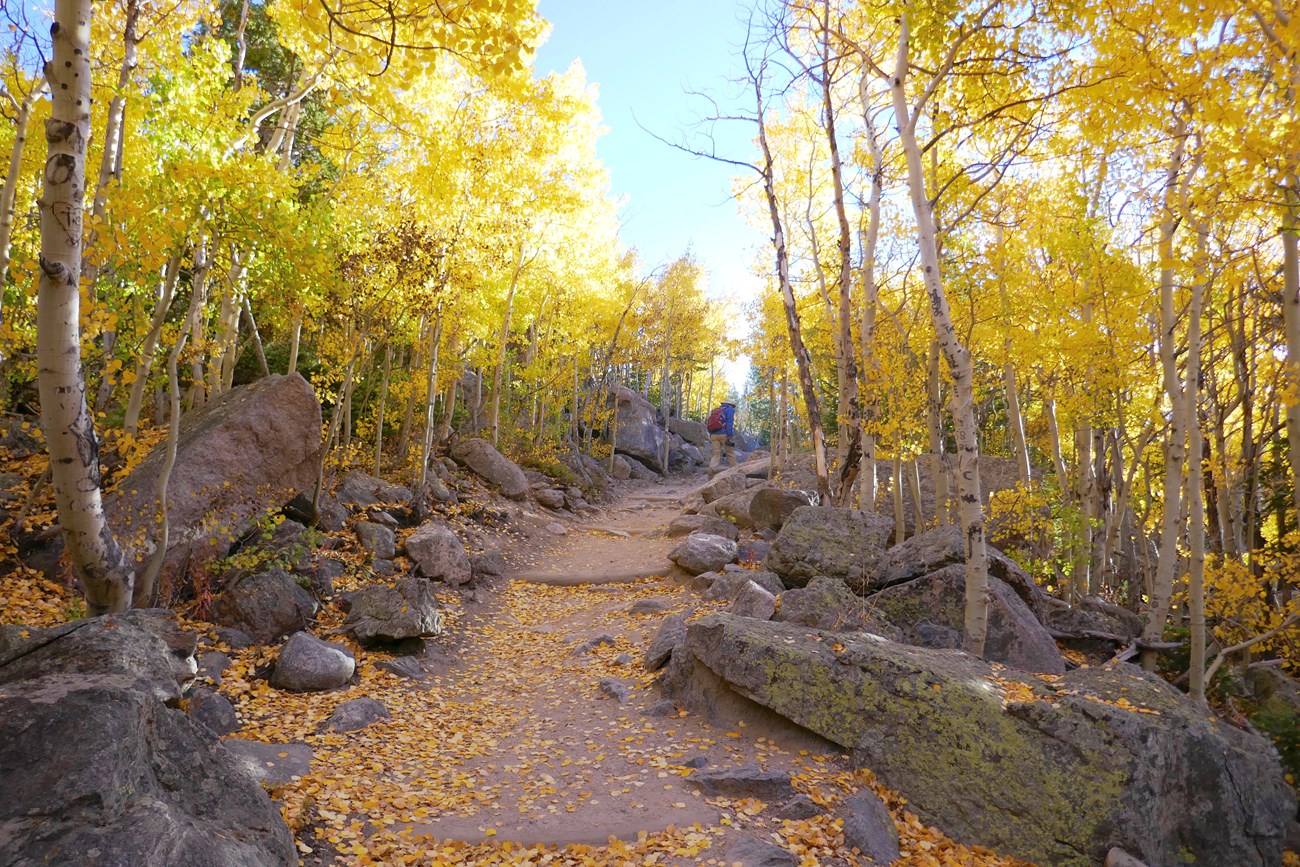
NPS Photo / Karen Daugherty The Color ChangeThe quaking aspen and its trembling leaves are still a source of wonder. The key to their fall colors hues lies not in myth, but in the natural environment. The color changes start first in the subalpine zone (9,000-11,000 feet elevation) in early September. Progressively, changes reach the montane zone (5,600-9,500 feet) by mid-month. Weather can dictate a good or poor year for color, and the fall display can last from days to weeks. Why the Vivid Colors?The scientific explanation is based on variations in temperature, moisture, and light. These factors set internal chemical changes in motion.A close examination of aspen buds in springtime reveals many hues hidden within the leaves. As the foliage matures, chlorophyll, the green pigment, carries on photosynthesis, converting sunshine into food and energy. In doing so, the green chlorophyll dominates all other colors. The diminished light temperatures of fall trigger the break down of chlorophyll. As green colors fade, yellow, orange, and red pigments--carotenoids and xanthophylls--are unmasked. The radiant red to nearly blue colors are produced by anthocyanin. This pigment appears when sugars are concentrated in the leaves. Ideal conditions of sunny days and cool nights produce the choicest spectrum. LifecycleQuaking aspens (Populus tremuloides) provide beautiful scenery and a rich habitat for wildlife. Aspens, the most widely distributed tree in North America, are one of the few deciduous trees hearty enough to survive in a harsh mountain environment In mountain environments, the brief growing season often prevents aspen seeds from germinating. Instead, an aspen's lateral roots produce vertical shoots, called suckers. Some suckers grow into mature trees, creating a large network of interconnected roots that can produce new trees for over a thousand years. A patch of genetically identical trees, a "clone", will sprout new buds and change colors at the same time. Flourishing aspens provide shade for young spruce and fir trees. These conifers grow and eventually replace aspen forests. Long after the visible portion of the aspen tree is gone, the underground root system remains behind patiently waiting for a disturbance from fire, avalanche, or other occurrence that removes the conifer forest. If the sun's warmth touches the soil, it will stimulate the aspen's dormant root system, starting another cycle of this pioneering specie. Aspen HabitatQuietly sit in an aspen grove, and watch the forest spring to life. High in the trees, woodpeckers hollow out cavities in the soft aspen bark while looking for insects. Leftover holes soon become an apartment house for nesting sapsuckers, bluebirds, swallows, and other species.Fallen aspen leaves, plant matter, and feces collect on the forest floor attracting insects and other invertebrates. Small leaf fragments and feces left behind are further decomposed by bacteria and fungi. The soil is enriched by mineral nutrients and decomposed organic material, permitting a rich, diverse understory. Deer and elk seek rest, cover, and forage in tall understory shrubs. Mothers hide their calves in brush while grazing and browsing nearby. Aspen bark provides an extra food source in winter for browsing elk. Suggested Aspen Viewing Areas
|
Last updated: September 21, 2020
